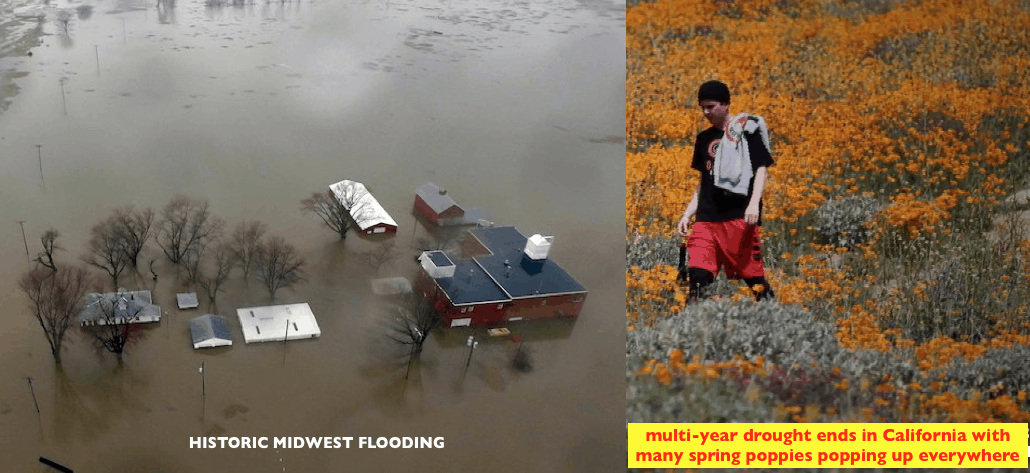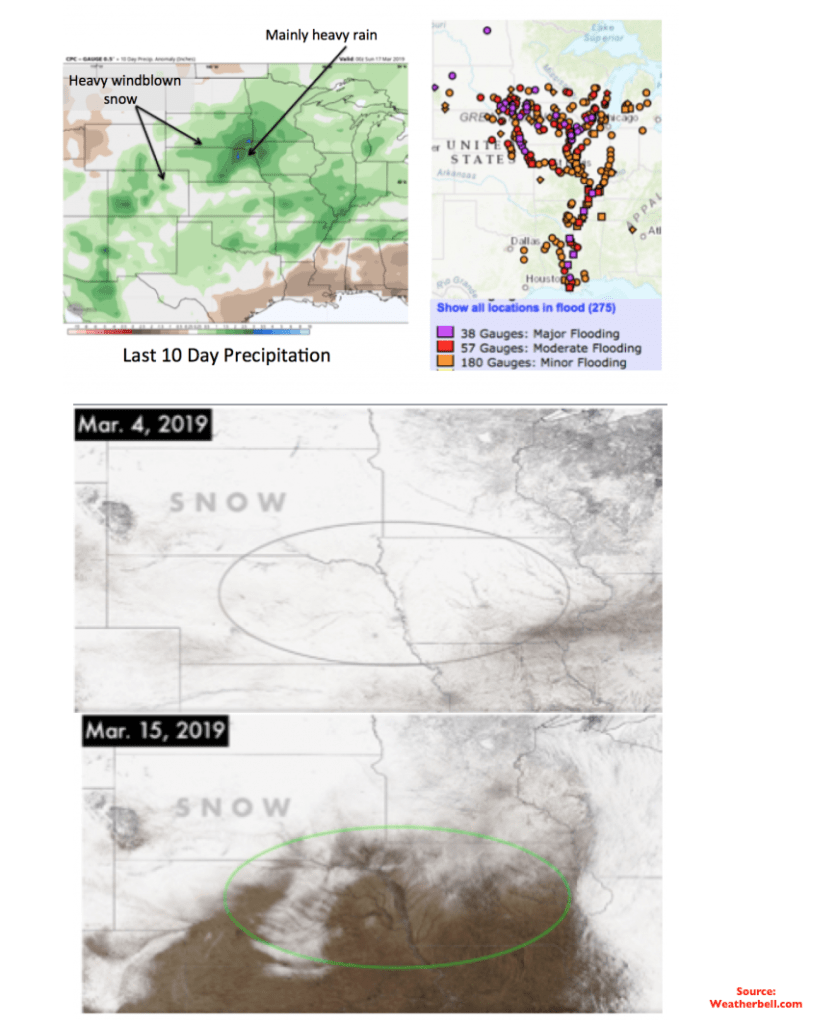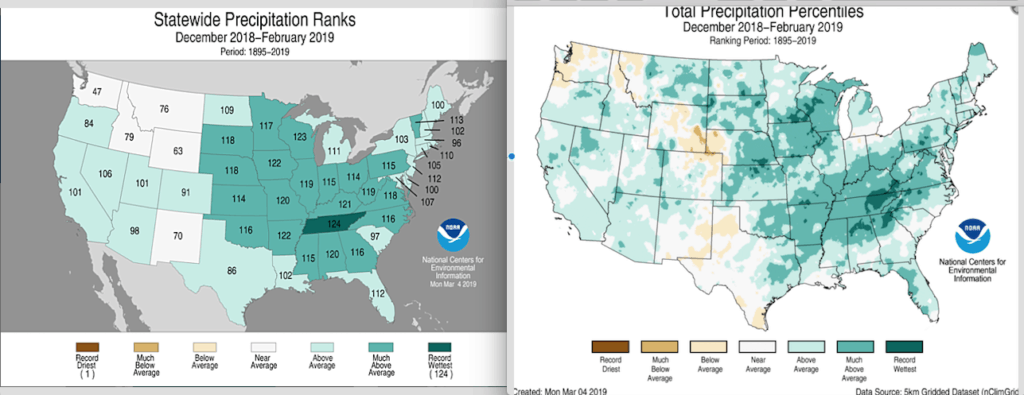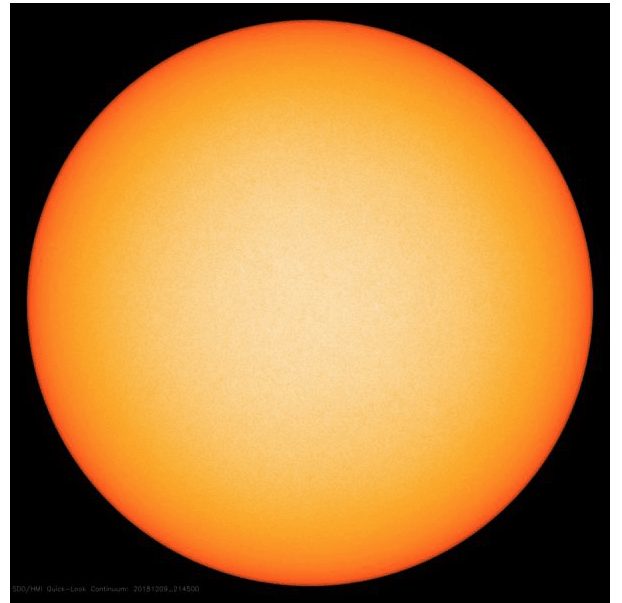Thousands of livestock killed and millions of acres flooded in the Midwest and Plain States poses a multi-billion dollar threat to agriculture and other industries. This comes at the worst possible time given the Trump Administration’s trade tariff war with China, in which any truce and Agreement is moving at a snails pace. While some meteorologists and other scientists believe that low solar activity (sunspots), combined with a reversal in the sun’s magnetic field might be causing all of this wild weather, I believe that typical “cyclical activity”, the warming oceans and an unusually late developing El Nino are mainly to blame. For California, incessant rains and snows have created havoc for homeowners but the storms and record winter snowpack will have the opposite effect after years of drought. The incessant moisture will be a big plus for California agriculture and the economy.
Over the couple months, I will have several segments (blogs) discussing El Nino vs solar activity and climate change, with respect to the United States planting season and its potential impact on agriculture and the commodity markets. For now, the corn market is beginning to react to potential planting delays and livestock and spring wheat crops are at risk if things do not dry out soon.
The images above show the flood risk in the Midwest brought on several “super storms” this winter, which have blessed western ski resorts with 15-30 feet of snow the last 2 months. Melting snow cover and more rainfall has been the issue. The images below show how the Platte River in Nebraska and the Missouri River has swollen in recent weeks from the flooding posing major transportation and farming risks.
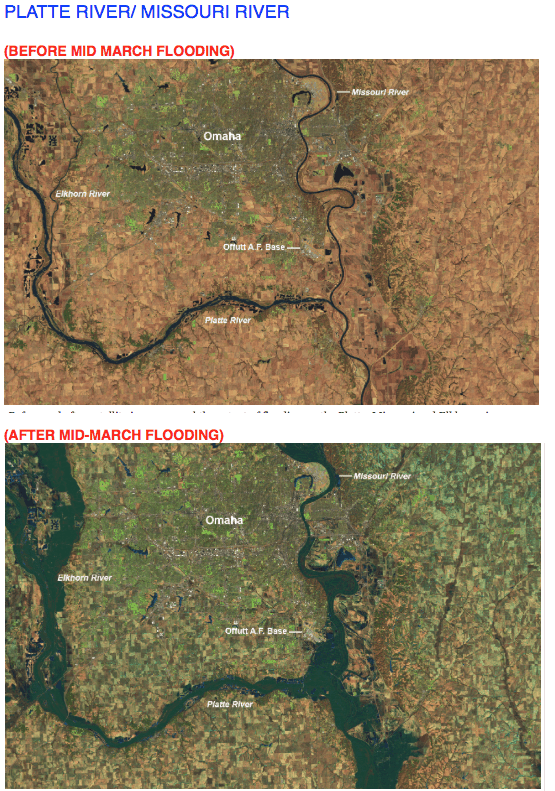
Historial Midwest Flooding
The flooding extends far beyond the area you see above as heavy snowfall and rainfall is also threatening the Des Moines River and all along the Tennessee Valley.
By now you’ve seen the photos. Vast fields covered in water, with grain silos and barns sticking up through the glassy surface. Warming temperatures melted hard-packed ice, and, in combination with recent rains, have caused a deluge that has overwhelmed rivers and levees and spread across the plains.
Nebraska has been hit hardest. The strongest, most intense waters have come from the failure of the 90-year-old Spencer Dam. After the “bomb cyclone” poured rain across the state, the failure of the dam ignited a flash flood that emptied into the Missouri River, and linked up with snow melt. Now, large swaths of the state are underwater.
The image above shows how the country as a whole has been the wettest in 124 years worth of weather data going back to the 1890’s. The table on the left depicts how Tennessee is ranked 124th (wettest) ever.
So what is causing all of this wild weather? Is it the lack of sunspots shown on the image below? Or is El Nino and a combination of other climatological variables?
On December 6, 2018, the Center of Excellence in Space Sciences India (CESSI) reported that two of its scientists have made a prediction for the upcoming sunspot cycle. Solar physicist Dibyendu Nandi and his Ph.D .student Prantika Bhowmik devised a new prediction technique, which simulates conditions both in the sun’s interior, where sunspots are created, and on the solar surface, where sunspots are destroyed.
Earlier predictions have suggested the coming sunspot cycle 25 will be weaker than the current cycle 24. But, based on their model, Nandi and Bhowmik believe cycle 25 might be similar to or even stronger than 24. They expect the next cycle to start rising about a year from now and to peak in 2024. Their work was published December 6, 2018, in the peer-reviewed journal Nature Communications.
Why should we care about the low solar cycle coming up? Many people do care about solar activity, due to the sun-earth connection and potential implications to offset man-made global warming; negatively impact earthly technologies (electric grid); and changes in climate. Low solar activity can prevent major disruptions in the nation’s electric grid and according to some scientists result in severe global cooling. High, active solar activity results in the beautiful “Northern Lights” at the higher latitudes (Vermont, Canada, Finland, etc.) but also cause havoc with electrical grids.
I will present some evidence in coming weeks, why “putting to much’ faith into the present solar minimum offsetting global warming and creating extreme weather—(such as the present Midwest flooding) is likely over blown.
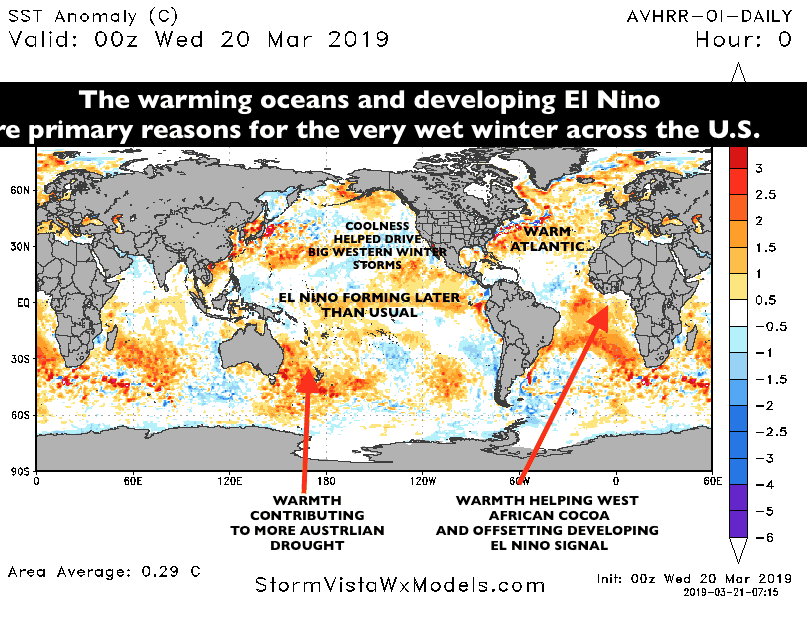
Weather is cyclical. The great 1993 floods that helped grain prices soar and wrecked havoc in the Mississippi and Illinois’ rivers actually had higher solar activity than we are presently witnessing. Hence, making a direct correlation to the present flooding to solar activity, is incorrect in my opinion. It may be one factor, but not the only one.
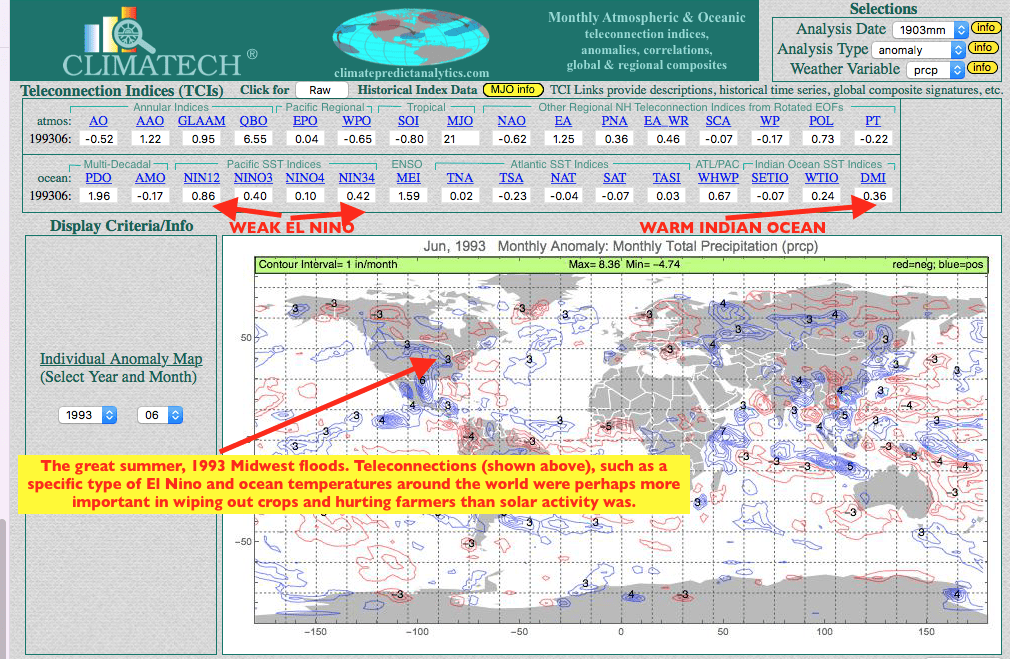
Climatech (above), shows the teleconnections associated with the intense corn and soybean belt rainfall in June, 1993.
1993 was the last time Midwest flooding was as severe as today. However, back then the flooding occurred, later on, during the growing season when crops such as corn and soybeans were developing. I believe that much of this flooding back in 1993 (much of it further east along the Mississippi and Illinois Rivers) was influenced by a combination of El Nino , as well as fall out and residue from Mt. Pinatubo more than any influence in solar activity.

